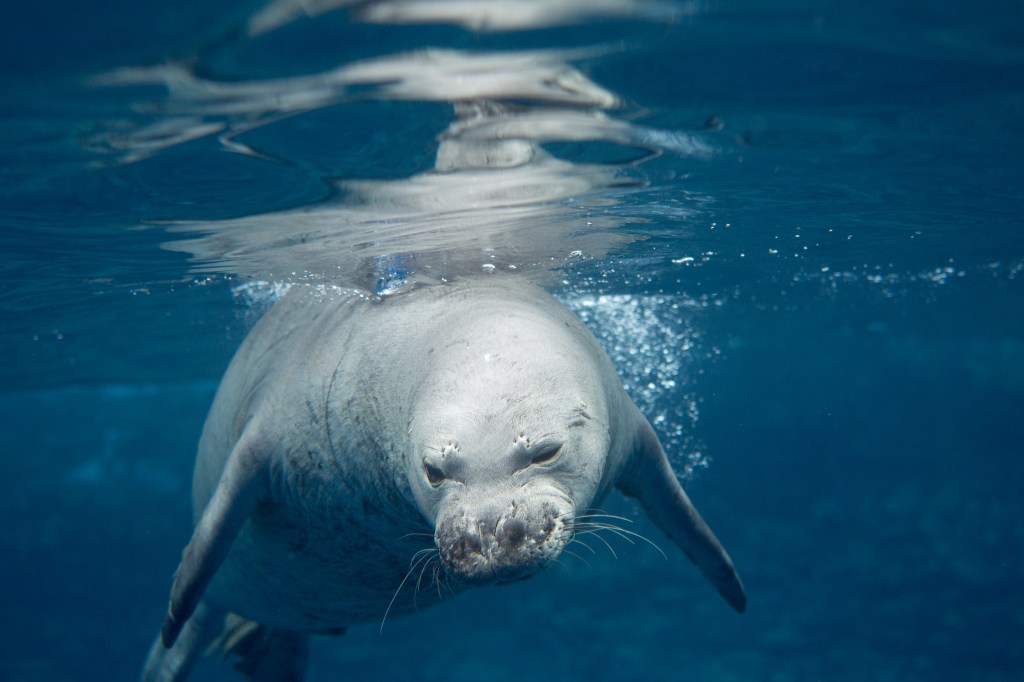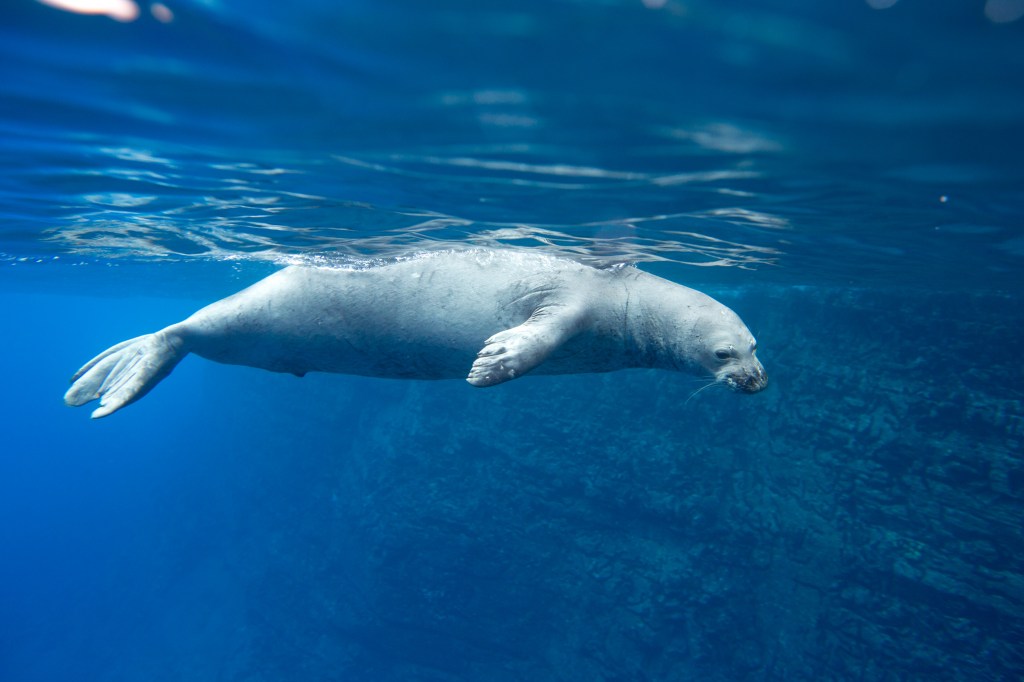The Endangered Hawaiian Monk Seal
It’s a beautiful day on Kauaʻi, and you are at the beach where the warm sun sits high in a clear blue sky. Big, fluffy clouds occasionally roll through, clearing your mind and soothing your soul. Your worries begin slipping away as you sink into the soft embrace of the golden sand.

The tropical air smells salty and sweet, and you enjoy the feel of the feather-light wind on your skin. As you stare into the mesmerizing rhythm of the waves, you notice a dark gray object dart under the surface. As you peer more closely, you realize a beautiful, sleek Hawaiian monk seal is making its way to shore for some much-needed R&R.
Hawaiian monk seals range from 6-7 feet in length, weigh 400 to 600 pounds, and generally live a maximum of 30 years in the wild. Their color ranges from black (newborn pups) to dark gray and brown (dorsal side) to light gray and light brown on their belly. Depending on what’s available, they have a diverse diet and feed on fish, eels, octopuses, squids, and crustaceans. Interesting fact: monk seals can hold their breath underwater for an astonishing 20 minutes. (1)
Hawaiian monk seals are adorable, intelligent, curious, playful, and adept swimmers, and they are also critically endangered and protected under the Endangered Species Act, the Marine Mammal Protection Act, and the State of Hawaiʻi. (2) Monk seals are endemic to the main and Northwestern Hawaiian Islands and not found anywhere else in the world. (3) A monk seal sighting is extraordinary, as only roughly 1,200 monk seals remain. (4)
 What are the biggest threats to the Hawaiian Monk Seal?
What are the biggest threats to the Hawaiian Monk Seal?
● Food Limitation
● Shark Predation
● Entanglement
● Male Seal Aggression
● Habitat Loss
● Fishery Interactions
● Disease and Contaminants
● Human-Seal Interactions
● Intentional Killing (5)
Kauaʻi is a favorite birthing (March through August) and resting spot for monk seals, as the beaches are quieter and less inhabited than the other main islands.
What to do if you see a monk seal come to shore to rest?
● Provide Space: Please give the monk seal space to land on shore, undisturbed (at least 50 feet onshore and in the water, 150 feet for mothers and their pups). (6) The seal has come to shore to rest, and its life depends on it.
● Call for Help: If you are one of the first people to witness a monk seal come to shore, please call the local NOAA Fisheries Monk Seal Hotline at 808-651-7668. Be ready with the following info: Location (as exact as you can be), the estimated size of the seal, any identifying characteristics/tags/markings, and behavior (both the seals and any interactions with people). Volunteers will come and put up a barrier around the monk seal so it can rest without being pushed back into the water before it’s ready. Please stay with the seal until the Volunteers arrive if you have time.
● Speak Up: If people are encroaching on the seal’s space, speak up for the seal and kindly inform people to give the seal room to rest. Sometimes, when people walk on the beach, they don’t see the seal resting in the sand. We must be aware of where we are at all times, and walking between the seal and the water is a big no-no, too!

Miracles are always happening, and hope is on the horizon! There is much work behind the scenes to help save the Hawaiian monk seal from extinction. Continuing research, conservation efforts, and programs (state and federal) are in place, namely the Hawaiian Monk Seal Recovery Plan, the Main Hawaiian Islands Monk Seal Management Plan, and the Hawaiian Monk Seal Research Program. The goal is long-term viability and successful reproduction, increasing the population. (7)
We’re in this together, friends, and we can help by educating ourselves and taking the proper action in our daily choices, reporting seal sightings, keeping our distance, reporting marine life in distress, and reducing nearshore fishery interactions. (8) The Hawaiian monk seal has been around for millions of years; if we have anything to do with it, they’ll be around for millions more to come!
(1-8): National Oceanic and Atmospheric Administration (NOAA) U.S. Department of Commerce. Hawaiian Monk Seal. Aug. 2023. https://www.fisheries.noaa.gov/species/hawaiian-monk-seal/overview
